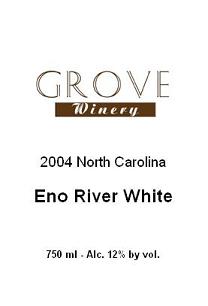 |
|
Wine Details
Price:
$12.95 per bottle
Description:
Our ERW comes from Jim Ward's award winning Eno River Vineyards in northern Durham County. This special field blend is made of 12 white grapes including: Vidal blanc, Traminette, Golden Muscat, Villard Blanc, Taminga, Blanc du Bois, Melody, Symphony, Chardonnay, Petit Manseng and Rkatsiteli. Harvested on August 26 & 27th. Aged in stainless.
|
|
|